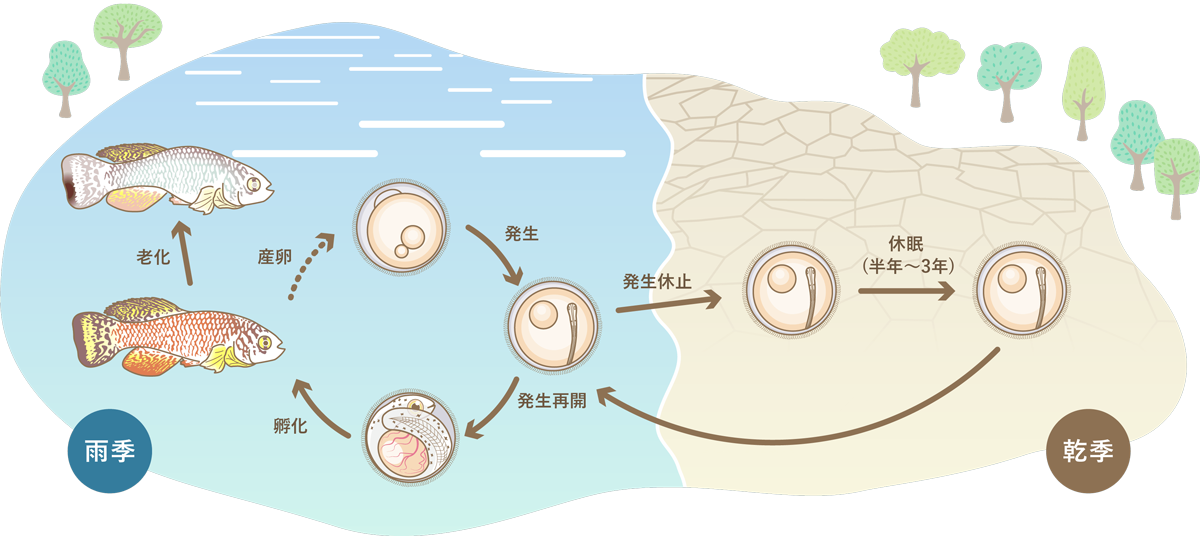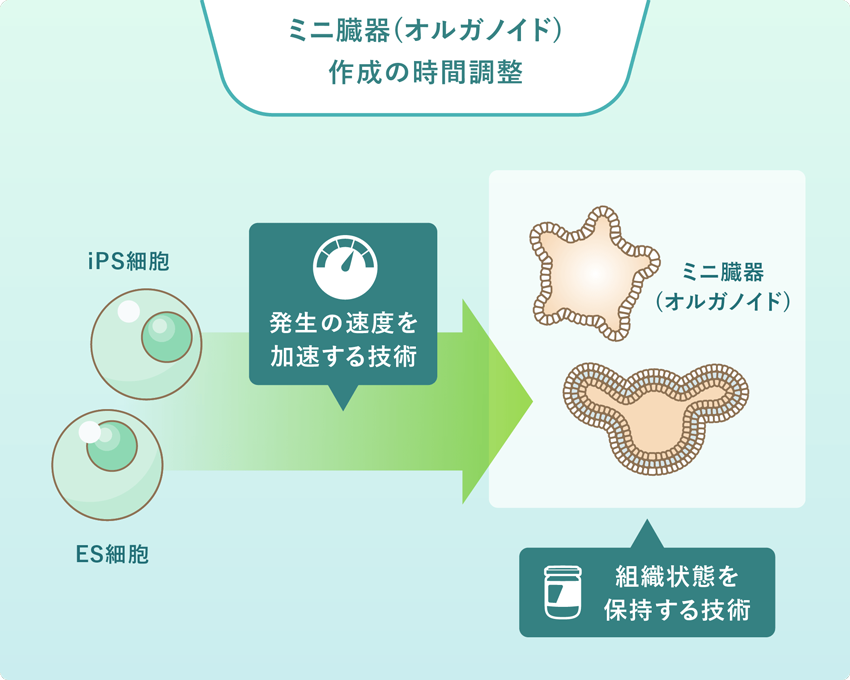Life is guided by an extraordinary "Blueprint of Time." From fertilization to the formation of a fully developed body, embryonic development unfolds with remarkable precision, adhering to a timeline unique to each species. For instance, zebrafish complete this process in just three days, chickens in 18 days, and humans over approximately 10 months. Remarkably, within the same species, the duration of embryonic development remains strikingly consistent. This constancy is believed to stem from a species-specific "clock-like" mechanism that regulates the pace of development. However, the precise molecular mechanisms underlying this embryonic clock remain largely enigmatic, leaving the study of time in embryonic development as a fascinating and largely uncharted frontier in biology.
To pioneer this unexplored field, we turned our focus to a fascinating phenomenon known as "diapause (developmental dormancy)", in which the embryonic clock pauses midway through development. A compelling model for studying this process is the turquoise killifish (Nothobranchius furzeri, Platzer et al., Trends Genet. 2016), an annual fish species native to Africa. These fish inhabit temporary ponds that form during the rainy season and disappear during the dry season. To survive these extreme environmental changes, the embryos halt their development and enter a state of diapause during the dry season. When the rains return, development resumes, allowing the fish to complete their natural lifespan.
生命の時計が停止する現象「発生休眠」

Diapause in turquoise killifish occurs after the development of essential tissues such as the brain, heart, muscles, and nerves, effectively pausing embryonic development at its midpoint. Remarkably, even during this suspended state, cells remain active, and subtle movements like occasional body stretching and contraction can be observed. In this unique state, the organism remains alive while its embryonic clock is temporarily halted, sustaining this diapause for durations ranging from six months to up to three years. Notably, whether or not killifish experience diapause, they develop into adults with comparable lifespans (Chi-Kuo Hu et al., Science, 2020). This indicates that diapause has no adverse effects, functioning instead as “a biological time machine" that pauses the developmental clock without impairing the organism’s vitality or longevity.
By studying diapause in turquoise killifish, which remain active even when their developmental clock is paused, we aim to uncover the molecular mechanisms that regulate embryonic time. Additionally, we seek to apply these findings to other species to unravel the molecular basis of the "Blueprint of Time." Our lab has already established techniques for rapidly and efficiently analyzing gene dynamics and functions in turquoise killifish (Oginuma et al., Sci Rep., 2022). Moreover, we have installed a state-of-the-art microscopy system that enables long-term observation of cellular states in dormant embryos, spanning weeks to months. By integrating these advanced gene analysis platforms with the diapause imaging system, we aim to investigate the functions of genes involved in regulating embryonic time. Through this work, we aspire to reveal the intricate mechanisms underlying the "Blueprint of Time" in living organisms.
What future awaits us once the "Blueprint of Time" is fully understood?
Preservation of Living Organisms:
Harnessing the molecular mechanisms of diapause could pave the way for preserving living organisms over extended periods. This breakthrough technology might allow for long-term preservation of humans and animals, potentially leading to transformative innovations akin to a "time machine."
Advancements in Organoid Research:
Organoids—miniature organs derived from pluripotent stem cells—are invaluable tools in disease modeling, drug development, and regenerative medicine. However, their formation is time-consuming, and preservation poses significant challenges. By leveraging the insights gained from the "Blueprint of Time," it may become possible to fine-tune the organoid formation process and enable their efficient preservation. This would greatly enhance the speed and effectiveness of organoid-based research, driving progress in these critical areas.
In summary, unraveling the "Blueprint of Time" holds the potential to revolutionize life sciences, unlocking groundbreaking advancements and ushering in entirely new realms of scientific exploration.
生命の「時の設計図」の全貌が明らかになれば・・・

